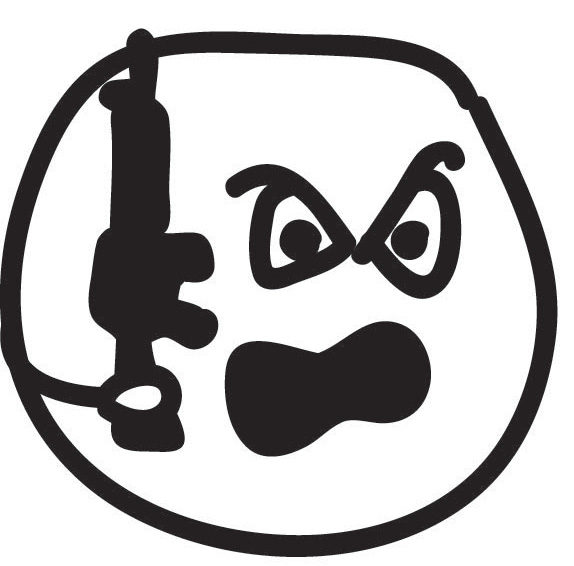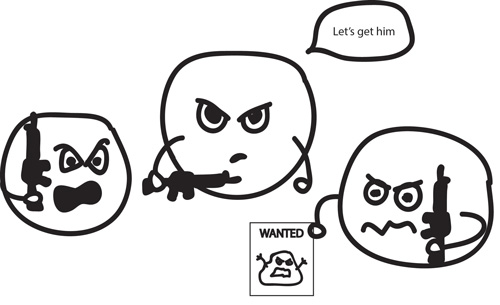
The past few decades have seen great advances for the treatment of cancer. Ongoing research is continuously generating novel therapeutic targets and treatment options. With improvements in surgery techniques, the development of more effective drugs and superior methods for the detection of cancer, patients now have a higher chance of survival. Our current arsenal of cancer treatments includes chemotherapy, radiotherapy, targeted therapies, hormonal therapies and surgery. Unfortunately, with any of these treatments, a number of patients will still experience cancer relapse and tumor recurrence so a combination of treatments are used in order to minimize this. For example chemotherapy is typically given in combination with, or after surgery. However, although combination treatments do reduce tumor relapse, the outcomes of these treatments are not always ideal and it is becoming increasingly clear that immune responses to cancer therapies contribute greatly to their efficacy.
Chemotherapy is one of the most commonly prescribed cancer treatments and also one of the most commonly assessed treatments in cancer research. Chemotherapeutic agents have a very specific mechanism of action; they target the process of cell division. The majority of cells in the human body have a pre-defined life-span, which varies between different cell types. For example, neuronal cells are long-lived and survive for decades, while immune cells are short-lived, with some only surviving for 8 hours. When cells die they need to be replaced, in particular the short-lived cells, and this is done via cell division. Cell division is a process of replication during which cells make a copy of themselves, one cell dividing into two, then four and so on exponentially. However, in order for our bodies to remain functional this division needs to be tightly controlled. A number of checkpoints exist to keep the balance between cell loss and cell division. When a cell loses these checkpoints and divides endlessly it becomes a cancer cell. In order for a cell to successfully divide the following have to occur; 1) there need to be sufficient amounts of nutrients, 2) division of DNA needs to occur, and 3) various support structures within the cell need to be correctly constructed. Chemotherapeutic agents work by inhibiting any one of these stages of cell division. This is why it is common to receive a combination of chemotherapeutic agents, as different ones will target different stages of cell division and hence using them in combination increases the chance of killing more cancer cells.
Because cancer cells divide much more rapidly than normal cells they are more likely to be eradicated by chemotherapy. However, chemotherapy also affects healthy tissues that have a high rate of cell division and cell renewal such as the skin, bone marrow, hair follicles and the lining of the gut and this is what causes toxic side effects. These side effects can limit the dose given to patients and insufficient dosing can lead to tumour recurrence; if any tumor cells remain after treatment these can start dividing again and grow into new tumors. Another limiting factor of chemotherapy is that it does not work on cells that are not dividing. One of the most perplexing properties of tumor cells is their ability to become dormant. Simply put, some tumor cells just stop dividing and enter a state of what could be called hibernation, they can then stay dormant for years before waking up and some never wake up at all. We do not know why tumor cells become dormant and why some wake up while others do not, but their ability to do so can reduce the effectiveness of chemotherapeutic agents which is why combining chemotherapy with another treatment that kills cancer cells via a different mechanism is an attractive option.
In my previous article: How the Immune System Can Promote Metastasis; 1 Dec 2014, we discussed the role of macrophages in cancer. Macrophages are highly plastic cells meaning they can carry out a number of different functions at any given time and change these functions depending on what is required of them. The easiest way to understand macrophage phenotypes is to group them into the following 1) the classically activated macrophages who’s essential function is to destroy, and 2) the alternatively activated macrophages who’s essential function is to repair. The classically activated macrophages carry out functions which inhibit tumor growth and kill tumor cells hence they are known to be anti-tumor. The alternatively activated macrophages are known to carry out functions which promote tumor growth and progression and hence are known as pro-tumor. This functional plasticity means that macrophages also have dual, and opposing, roles in cancer treatments; they can either enhance destruction of the tumor cells or display protective functions and ultimately contribute to tumor recurrence. Due to the complex nature of macrophages it can help to examine alternatively activated macrophages and classically activated macrophages and their roles in chemotherapy treatment in isolation;
1. Alternatively activated macrophages and chemotherapy
The destruction of normal tissue by chemotherapeutic agents creates a wound-like environment within the tissue, which can lead to the induction of an alternatively activated phenotype in macrophages causing them to attempt to repair the wound. Unfortunately, the functions that these macrophages use to heal the injury to the tissue can also promote resistance to chemotherapeutic drugs. Pre-clinical studies have shown that alternatively activated macrophages can mediate resistance to chemotherapy by secreting growth factors and also inhibiting cell death signaling pathways in tumor cells thus protecting the tumor cells from the cytotoxic effects of the chemotherapy. In addition to this, even if most of the tumor is destroyed and only a few tumor cells are left, the functions of alternatively activated macrophages will help the remaining tumor cells survive and grow. Alternatively activated macrophages can also suppress any immune responses against the tumor triggered by chemotherapy, for example adaptive anti-tumor immune responses. Adaptive immune cells comprise the more specialized arm of the immune system and are typically more effective at killing tumor cells. Alternatively activated macrophages are capable of suppressing adaptive immune cells as part of their normal functional repertoire. Consequently, the alternatively activated macrophages, which are only trying to do their job, can inadvertently protect the tumor from the actions of chemotherapeutic agents and also contribute to tumor recurrence and relapse.
2. Classically activated macrophages and chemotherapy
On the other hand, the damage created by destruction of tumors and normal tissue can also lead to the release of factors that induce a classically activated phenotype in macrophages. These macrophages can release cytotoxic factors that destroy tumor cells, they can also phagocytose, or eat, tumor cells and destroy them via the actions of various enzymes. Classically activated macrophages also secrete inflammatory mediators which perpetuate their anti-tumor phenotype. In contrast to alternatively activated macrophages, classically activated macrophages can recruit and activate adaptive immune cells. The interactions between macrophages and adaptive immune cells are complex but simply put; during a normal infection, classically activated macrophages eat whatever is causing the infection (the intruders) and digest them into little pieces. They then find an adaptive immune cell and shown them these pieces, this process is almost like the macrophages showing the adaptive immune cells a wanted poster. The adaptive immune cells become activated, hunt down all of the intruders and eradicate them. Classically activated macrophages can also do this with tumors and activation of adaptive immune cells by classically activated macrophages has been shown to enhance tumor cell destruction during chemotherapy treatment.

It remains unclear what causes macrophages to polarize towards classically activated or alternatively activated phenotypes during chemotherapy treatment however a better understanding of the mechanisms behind this polarization will aid greatly in finding ways to increase the potency of current chemotherapeutic agents. Given the varied roles of macrophages during chemotherapy treatment we have two options 1) to inhibit the pro-tumor/wound-healing functions of macrophages during chemotherapy treatment in order to eliminate the protection these functions afford the tumor cells, or 2) to re-activate macrophages towards an anti-tumor response during chemotherapy treatment thus not only enhancing the efficacy of the chemotherapeutic agents but also recruiting other immune cells to help fight the tumor. By re-activating macrophages towards an anti-tumor phenotype we could create an elite tumor fighting force of all different types of immune cells. For now, various methods of blocking macrophage recruitment, blocking their pro-tumor functions, or inducing polarization towards an anti-tumor phenotype have all been used successfully in pre-clinical studies to enhance responses to cytotoxic therapy and a number of clinical studies are now looking into the efficacy of such treatments in breast cancer.